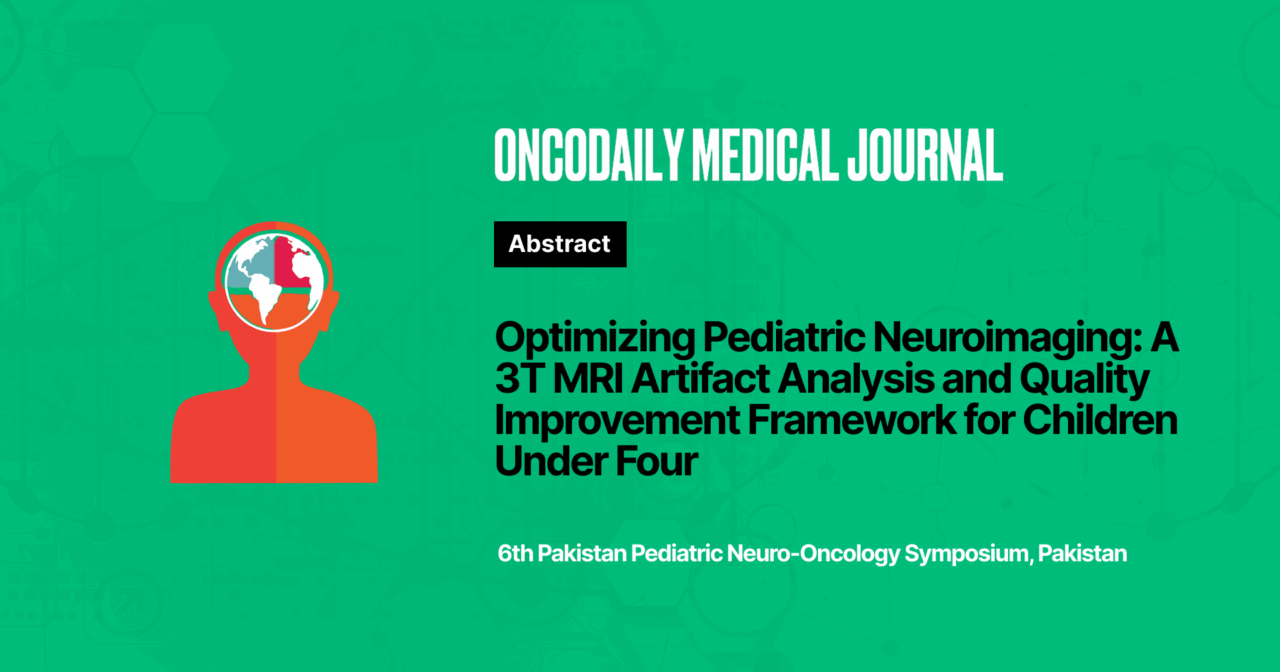Optimizing Pediatric Neuroimaging: A 3T MRI Artifact Analysis and Quality Improvement Framework for Children Under Four
Abstract
Introduction: High-quality T2-weighted MRI is crucial for assessing neurodevelopment in children aged 0–4 years due to superior visualization of immature brain structures. However, pediatric MRI at 3 Tesla (3T) is particularly challenging due to increased susceptibility to image artifacts, particularly in young children. Few studies quantify artifact frequencies or investigate their underlying causes. This study addresses that gap.
Methodology: We performed a quality control (QC) audit on T2-weighted MRI scans acquired with a Toshiba Vantage Titan 3T system from children in the Karachi-based Maternal and environmental Impact assessment on Neurodevelopment in Early childhood years (MINE) cohort. Six artifact types (motion, noise, zipper, field-of-view aliasing, banding, contrast loss) were evaluated visually on a three-point scale. QC-pass required a cumulative artifact score of 0. Data was analyzed using IBM SPSS Statistics 27.0 and artifact frequencies were compared across age subgroups and sequence types using chi-squared tests.
Results: A total of 270 children participated. Overall QC-pass was 52.2% (479/917 scans). Severe motion decreased from 9.5% at 0–7 months to 1.3% at 13–19 months and 0% at 24–30 months (p < 0.001). Severe noise and contrast degradation showed similar age‑related declines. Equipment-related artifacts (zipper, banding, FOV) were rare (<3%). Artifacts varied significantly by sequence type: SAG T2 exhibited higher severe artifact frequencies, while SAG T2 VOLUME predominantly showed artifact-free scans.
Conclusion: Motion, noise, and contrast degradation are key barriers to artifact-free pediatric T2 imaging at 3T. Prioritizing volumetric 3D sequences, rigorous immobilization, and minimizing 2D FSE sequences could improve QC-pass rates. A limitation of this study includes reliance on visual artifact scoring, potentially missing subtle degradations. Future directions involve exploring automated artifact detection tools to enhance real-time quality assurance.
Funding: Bill & Melinda Gates Foundation (BMGF).
Disclosure Statements: We would like to acknowledge our partnering institutions King’s College London (KCL), Children’s Hospital Los Angeles (CHLA), and Children’s National Hospital Washington DC.
License: This article is published under the terms of the Creative Commons Attribution 4.0 International License (CC BY 4.0).
© Sidra Kaleem Jafri, 2025. This license permits unrestricted use, distribution, and reproduction in any medium, provided the original author and source are credited.





